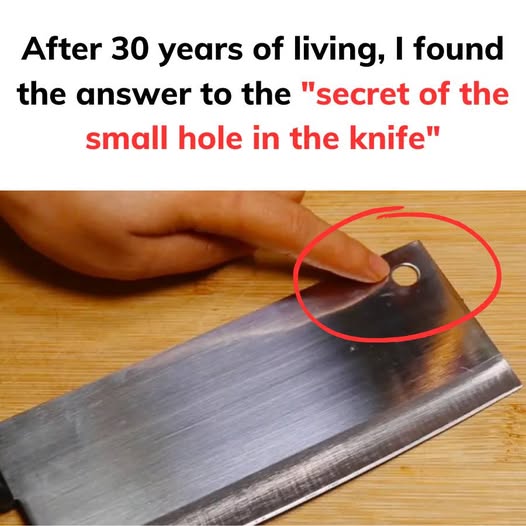ADVERTISEMENT
According to the physical explanation, the circular holes on the knife are designed to “absorb sh0ck”. When we use a kitchen knife to cut meat or bones, it is subjected to a high impact force. If there is no means to disperse that pressure, the blade will break easily, making our grip tough.
At the time, this little round hole allowed the rear and front of the knife to bear power evenly, which helped to safeguard and extend the knife’s life.
1. Storage and drainage
After using the kitchen knife, wash it to eliminate any oil stains or spots on the surface. After cleaning, the knife will still have many water marks on it. If placed directly on a wooden cutting board, it will quickly cause mold. Furthermore, if the kitchen knife is left wet for an extended time, it can rust.
At this point, the hole in the knife serves as a convenient knife-hanging function. This also helps to swiftly drain water, preventing the knife from rusting. Not to mention that hanging the knife above helps to keep the kitchen neat and tidy.
continued on next page
